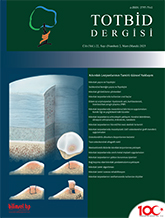
If chondral defects occurring in the limited area of the knee joint are not treated, they progress and result in three-compartmental arthrosis of the knee. Metal implants used in limited resurfacing arthroplasty (LRA) maybe preferred treatment option between biological techniques and arthroplasty in middle-aged patients with full-thickness cartilage defects. The advantage of this technique is that it allows the replacement of the damaged surface in the limited area without disturbing the healthy tissue and the biomechanics of the knee. In LRAs developed for the treatment of symptomatic cartilage lesions, there is no implant application in the unaffected contralateral joint area. There are different types of LRAs according to their anatomical location, being monopolar or bipolar, and covering the surface on which they are located. It is very important that it is preferred in appropriate indications as a result of a good physical examination and imaging beforehand. In the surgical technique, it should be kept in mind that the LRA should cover the entire existing cartilage defect, and the implant should be placed at the same level as the healthy cartilage or 0.5 mm lower, and if there is malalignment, corrective osteotomies should be added to the surgery. In conclusion, LRA is an effective surgical option with low morbidity in terms of both controlling pain and slowing the progression of arthrosis in cartilage damage.